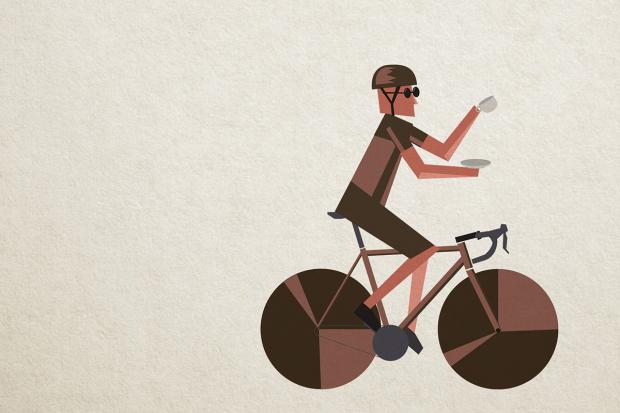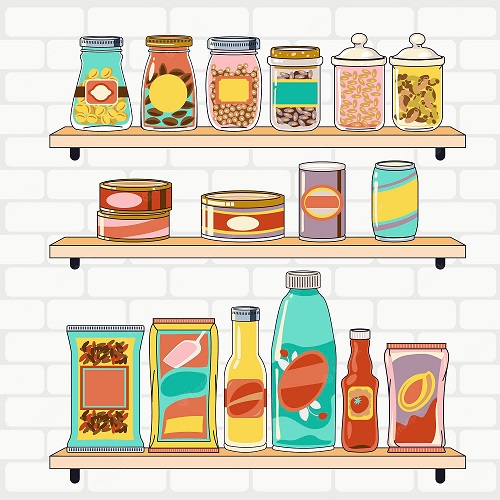Caffeine is considered a diuretic, which was once negatively viewed by athletes to increase dehydration. However, we now understand while caffeine does cause some fluid loss, (where it is consumed as a liquid), there is generally a net gain in fluid.
So the tables have turned and caffeine is being spruced for its benefits in sports nutrition rather than as a banned substance.
Let’s explore the question… Caffeine for athletes … does it improve or hinder performance? Today I hand the Ironmum Karla reins over to mentor and all-around top gal, Leanne Cooper Director of Well College Global and registered nutritionist.
Roughly 1.07 mg of fluid is lost from the body
Given most drinks will provide about 200 mls of fluid
This will still leave a net gain of about 150 mls of fluid entering the body
Caffeine is found in the leaves and beans of the coffee tree, in tea leaves, guarana berries, and in small quantities in cocoa and the kola nut. If you are a Rooibos tea drinker you will be pleased to learn that this tea comes from a different plant and contains no caffeine. Caffeine can also turn up as an ingredient in cold medications, appetite suppressants, and pain relievers and can be helpful against some headaches and of course drowsiness. Surprisingly, it’s the leaves of the tea plant that contain the most caffeine, around 5% compared to 1 -2% for coffee beans. The plant world uses caffeine cleverly for survival as it helps to repel many insects. As most of us know, caffeine is a stimulant to our central nervous system (CNS), helping to keep us alert and overcome feelings of drowsiness.
What’s in a cuppa?
Depending on what you read the amount of caffeine any in food will vary. The caffeine content of an average of 150 ml cup of tea varies from 30 – 100 mg, depending on how long the tea is made. If you use milk, sugar, loose leaves or tea bags (strong loose-leaf tea provides the most caffeine)all create a different end result. Coffee beans come in two flavours, Robusta, which has more caffeine and Arabica. Instant coffee has 60–100mg per 150 ml, depending on the brand. Espresso comes in at around 90 mg per 150 ml1. Consuming a whole 200 g block of chocolate would mean you would get the equivalent of about 550 mg of combined methylxanthines (caffeine and other stimulants). A 30 g bar has between 20 to 60 mg caffeine. Given it’s our teenagers who consume the greatest quantity of soft drinks; caffeine intake is something worth keeping an eye on. A 375 ml cola drink contains around 40 mg of caffeine while a 250 ml energy drink contains around 80 to 100 mg caffeine – about the same as a shot of espresso.
Caffeine is rapidly absorbed in less than an hour. After this, caffeine has a half-life (the time it takes for the total amount is taken to be reduced or cleared to half the original total) of 3 ½ hours to 6 hours.
In other words, it will take four or more hours for your 50mg of caffeine you drank
to clear to 25mg in your body,
and if you love your coffee and drink three or even more a day,
you can see how it can
hang about in the system for a while.
Editors note: Be sure to choose high quality or even better, certified organic beans such as Di Bella coffee which means there are no synthetic fertilizers or chemicals used in growing or production, which means cleaner beans, air, land, and water. What’s even better is organic coffee beans are richer in healthful antioxidants and I’m sure you will taste the difference.
Caffeine for athletes
Caffeine is a common aid in sport and hence why specific levels of caffeine derivatives in the urine were once banned in many sports. However, recently the ban was lifted. But remember there is a fine line between the benefit and cost of caffeine use in sports, for example, intake of 13 mg/kg and over greatly increases the risk of serious side effects including gastric distress, anxiety attacks, heart palpitations and headaches.
The use of caffeine in sport varies according to the intensity of the activity and the athlete’s body weight. One last major variable must be considered and that is the individuals ‘tolerance’ to caffeine, for example, habitual coffee drinks may require a period of abstinence from the caffeine in order to gain beneficial effects from caffeine.
Caffeine’s effect on performance
Caffeine at intermediate dose levels of 5-mg/kg caffeine up to three to four hours before intensive exercise stimulates the oxidation of free fatty acids, as a glycogen sparing effect researchers suggest that this is limited only to the first 15 minutes of activity (Burke, 1998). Other effects include increased blood flow to the central nervous system and consequently stimulation of the nervous system providing a feeling of alertness and acuity. Increased release of adrenaline occurs at this dose also, stimulating muscle, improving performance and generally causing an excretory effect on the nervous system.
Caffeine was once considered a diuretic, which was believed to increase dehydration. However, we now know that while caffeine does cause some fluid loss, where it is consumed as a liquid there is generally a net gain in the fluid. Roughly 1.07 mg of fluid is lost from the body. Given most drinks will provide about 200 ml of fluid this will still leave a net gain of about 150 ml of fluid entering the body.
So, enjoy your coffee or tea, but like all things, everything in its right balance and reasoning.
Related Images:






